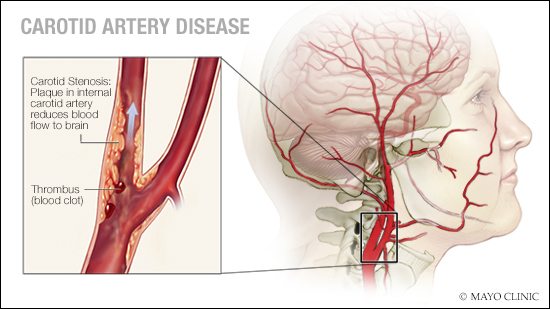Carotid artery stenosis is a narrowing of the large arteries or vessels on the sides of the neck that carry blood to the head and the brain. This narrowing is usually the result of a buildup of fatty deposits known as plaque within the arteries. Stenosis can worsen over time to completely block the artery and cause strokes.
"Most of the time, there are no signs or symptoms. And that is a problem because it is a silent disease that progresses over time until there is an acute rupture of the plaque," says Dr. Luis Savastano, a Mayo Clinic neurosurgeon. "And when that happens, a clot can form in the surface, and the clot can be pushed downstream to the brain. And that is what causes the stroke."
But with early detection and new targeted therapies, injury to the brain can be minimized. On the Q&A podcast, Dr. Savastano discusses new techniques and the tools used to treat carotid artery stenosis and find the root cause of a stroke.
Watch: Dr. Savastano explains new techniques to treat carotid artery stenosis.
Read the full transcript.
____________________________________________
For the safety of its patients, staff and visitors, Mayo Clinic has strict masking policies in place. Anyone shown without a mask was recorded prior to COVID-19 or recorded in an area not designated for patient care, where social distancing and other safety protocols were followed.








